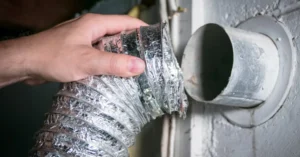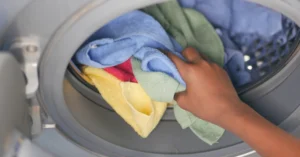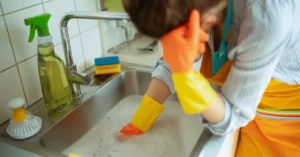That slow-draining bathroom sink might seem like a minor annoyance, but it’s actually sending you an urgent message. Many San Diego homeowners dismiss sluggish drains as a simple inconvenience, unaware they’re often early warning signs of more serious plumbing problems developing beneath the surface.
At Solid Plumbing & Drain Inc., we’ve spent 20 years serving homeowners throughout San Diego County, and we’ve seen firsthand how the dangers of ignoring slow drains can escalate into emergency situations that disrupt lives and damage homes. Our experience has taught us that addressing these issues early not only saves money but protects your home’s value and your family’s health.
In this article, you’ll discover why slow drains are particularly problematic in Southern California homes, the hidden dangers of ignoring slow drains, and practical solutions that can prevent minor annoyances from becoming major emergencies.
Why San Diego Homes Are Especially Vulnerable to Drain Problems
Before diving into specific dangers, it’s important to understand why homes in our region face unique drain challenges compared to properties in other parts of the country.
Hard Water’s Hidden Impact
San Diego’s notoriously hard water contains high levels of calcium and magnesium that create persistent plumbing challenges. Our technicians regularly observe how these minerals accumulate inside pipes, gradually narrowing the diameter and creating rough surfaces where debris easily catches. In coastal communities like La Jolla and Coronado, this effect combines with salt air corrosion to accelerate pipe deterioration from both inside and out.
Many homeowners are surprised to learn that San Diego’s water hardness ranges from 200-300 parts per million, significantly higher than the national average. This mineral content means our drains accumulate buildup faster than in regions with softer water, making regular plumbing maintenance even more critical.
Drought-Related Concentration Effects
During Southern California’s frequent drought periods, water conservation measures inadvertently intensify drain problems. When households reduce water usage, less flow moves through the plumbing system, allowing more sediment and debris to settle in pipes rather than being carried away. Our team has noticed a clear correlation between drought restrictions and increased drain service calls, particularly in water-conscious communities like Scripps Ranch and Rancho Bernardo.
The reduced flow from low-flow fixtures, while excellent for conservation, often proves insufficient to carry waste effectively through existing plumbing systems designed for higher water volumes. This creates a perfect environment for blockages to form and grow unnoticed – one of the key dangers of ignoring slow drains.
Unique Local Vegetation Challenges
San Diego’s distinctive landscape creates specific drain and sewer challenges. Drought-resistant trees and shrubs common in our region—such as eucalyptus, pepper trees, and certain palm varieties—have aggressive root systems that actively seek moisture. These roots are naturally drawn to the tiny leaks and joints in sewer lines, where they can quickly develop into massive blockages.
In established neighborhoods like Kensington, Mission Hills, and Point Loma, mature landscaping combined with aging sewer infrastructure creates particularly high vulnerability to root intrusion. What begins as a slow kitchen drain can actually indicate roots already penetrating your main sewer line, requiring modern sewer repair methods to address properly.
Danger #1: Structural Damage to Your San Diego Home
Slow drains often indicate developing clogs that can lead to water backing up and causing significant structural damage to your property. Understanding the dangers of ignoring slow drains begins with recognizing how water damage spreads.
Hidden Leaks Behind Walls and Under Floors
When drains move slowly, pressure builds in your plumbing system. This increased pressure finds the weakest points in your pipes—often at joints or connections—and gradually forces water into spaces where it should never be. Our restoration partners report that many of their most extensive repair jobs began with homeowners ignoring slow drains for months.
In San Diego’s older neighborhoods like North Park, University Heights, and South Park, where homes often feature original plumbing systems, these weak points are particularly vulnerable. The combination of aged pipes, hard water deposits, and increased pressure creates perfect conditions for leaks to develop behind walls, under floors, or within ceilings. Early water leak detection can prevent this costly damage.
Foundation Undermining in San Diego’s Variable Soil
San Diego’s soil composition varies dramatically across the county, from clay-heavy areas in Clairemont and Mira Mesa to sandy coastal zones in Pacific Beach and Ocean Beach. When slow drains eventually lead to leaks in sewer lines, this water can erode the soil supporting your foundation.
Our foundation specialist partners have documented numerous cases where slab leaks and foundation issues were directly traced back to drain problems that began with simple slow drainage. In hillside communities like Del Cerro, Mt. Helix, and La Mesa, this soil erosion can be particularly problematic, potentially affecting the stability of the entire property. This represents one of the most serious dangers of ignoring slow drains in our region.
Damage to Finishes and Fixtures
Before causing catastrophic structural damage, slow drains often lead to deterioration of finishes and fixtures. The constant exposure to standing water damages caulking, grout, and sealants around sinks, tubs, and showers. Over time, this moisture penetrates to subflooring, cabinetry, and wall materials.
In San Diego’s luxury homes, where high-end materials and custom finishes are common, this damage is particularly costly to repair. We’ve worked with homeowners in areas like Rancho Santa Fe and La Jolla who faced five-figure restoration costs for damage that began with a simple slow-draining shower. Professional bathroom plumbing maintenance can prevent this expensive damage.
Danger #2: Health Hazards for Your Family
Beyond property damage, the dangers of ignoring slow drains create environments that can directly impact your family’s health and wellbeing.
Mold and Mildew Proliferation
San Diego’s mild, often humid coastal climate creates ideal conditions for mold growth when moisture is present. Slow drains that allow water to pool around fixtures provide perfect breeding grounds for mold and mildew. Our technicians frequently discover significant mold growth beneath and behind fixtures when addressing long-standing drain issues.
This problem is especially pronounced in coastal communities from Oceanside to Imperial Beach, where higher ambient humidity accelerates mold development. Many homeowners don’t realize that mold can begin growing within 24-48 hours of moisture exposure, long before it becomes visible to the naked eye. The CDC warns that mold exposure can cause respiratory problems, especially in sensitive individuals.
Bacteria and Pathogen Exposure
Standing water from slow drains harbors bacteria and pathogens that can affect your family’s health. The warm, moist environment around a slow drain provides ideal conditions for microorganism growth. Our microbiologist consultants have identified concerning levels of bacteria in biofilm samples taken from slow-draining fixtures.
Families with young children, elderly members, or individuals with compromised immune systems face particular risks from these exposures. We’ve worked with numerous San Diego healthcare professionals who emphasize the connection between proper plumbing function and household health. This represents a serious health-related aspect of the dangers of ignoring slow drains.
Sewer Gas Infiltration
Perhaps the most insidious health hazard from slow drains involves sewer gas entering your living space. When drains function properly, water traps prevent these gases from backing up into your home. Slow drains often indicate partial blockages that can disrupt this system, allowing hydrogen sulfide, methane, and other harmful gases to seep into your home.
In addition to the unpleasant odor, these gases can cause headaches, nausea, dizziness, and fatigue. Long-term exposure to higher concentrations poses more serious health risks. Our technicians have documented numerous cases where mysterious household odors were directly traced to compromised drain systems requiring immediate emergency plumbing attention.
Danger #3: Pest Infestations Unique to Southern California
The dangers of ignoring slow drains create environments that attract pests particularly common in our region, adding another layer of problems to address.
Drain Flies and Mosquitoes
The standing water and organic material in slow-draining fixtures provide perfect breeding conditions for drain flies and mosquitoes. These pests can reproduce rapidly, with drain flies completing their life cycle in just 7-14 days. Our technicians regularly find drain fly infestations in homes where slow drains have been ignored.
With San Diego’s year-round warm climate, these pest populations can persist and grow throughout all seasons, unlike colder regions where winter provides natural population control. In communities near lagoons and wetlands, like Cardiff, Solana Beach, and parts of Chula Vista, mosquito concerns are particularly significant due to potential disease transmission risks outlined by the San Diego County Vector Control Program.
Cockroaches and Other Moisture-Seeking Pests
Southern California’s cockroach species are strongly attracted to the moisture and organic material found in slow-draining plumbing systems. American cockroaches, in particular, commonly enter homes through sewer connections and are drawn to the conditions created by partial drain blockages.
Our pest control partners report that many of their most challenging infestations are directly connected to plumbing issues. In older neighborhoods with connected sewer systems, like Golden Hill, Sherman Heights, and parts of downtown, these infestations can spread between properties through shared plumbing infrastructure. Professional drain cleaning can eliminate these pest breeding grounds.
Rodent Access Points
Deteriorating drain systems often create entry points for rodents seeking water, particularly during Southern California’s dry seasons. Rats and mice can squeeze through surprisingly small openings created by shifting pipes or deteriorating seals around drain lines.
In canyon-adjacent communities like Mission Valley, Tierrasanta, and Hillcrest, where rodent populations naturally exist in the surrounding landscape, maintaining intact plumbing systems provides an important barrier against home invasion. Our technicians have documented numerous cases where rodent entry points directly connected to compromised drain systems, highlighting another aspect of the dangers of ignoring slow drains.
Danger #4: Water Waste in Drought-Prone Southern California
In a region where water conservation is both an environmental responsibility and an economic necessity, the dangers of ignoring slow drains often indicate problems that waste this precious resource.
Hidden Leaks and Continuous Water Loss
Slow drains frequently indicate partial blockages that increase pressure in your plumbing system. This pressure often finds release through small leaks that may go undetected for months or even years. Our leak detection specialists have documented cases where homeowners were losing thousands of gallons monthly without any visible signs.
With San Diego water rates among the highest in the nation, these hidden leaks translate to significant financial waste. Many homeowners are shocked to discover that a seemingly minor plumbing issue has been costing them hundreds of dollars annually in wasted water. Implementing our Solid Care Plan can help detect these issues early.
Inefficient Fixture Performance
When drains move slowly, fixtures and appliances connected to those drain lines operate less efficiently. Dishwashers and washing machines must work harder and longer when draining improperly, consuming more water and energy with each cycle. Our appliance repair partners frequently trace premature appliance failures to underlying drain issues.
This inefficiency is particularly problematic with today’s high-efficiency appliances, which are designed to operate with properly functioning drain systems. The water and energy savings these modern appliances should provide are often negated by slow-draining plumbing, representing hidden costs among the dangers of ignoring slow drains.
Increased Water Usage from Compensatory Behaviors
When facing slow drains, many homeowners unconsciously adopt water-wasting behaviors to compensate. Running water longer to flush debris down slow drains, repeated flushing of sluggish toilets, and avoiding water-efficient settings on appliances all increase consumption. Our water efficiency audits regularly identify these behavioral adaptations in homes with drain issues.
These compensatory behaviors are particularly concerning during drought restrictions, when households may be approaching tier thresholds in San Diego’s water billing structure. Exceeding these thresholds can dramatically increase water costs beyond the actual volume used, making water conservation more critical than ever.
Danger #5: Escalating Repair Costs and Emergency Services
Perhaps the most practical concern with the dangers of ignoring slow drains is the inevitable escalation from minor maintenance to major emergency repairs.
The Progressive Nature of Drain Problems
Drain issues rarely resolve themselves—they almost invariably worsen over time. What begins as a minor clog collecting around a small amount of debris gradually captures more material, creating an increasingly significant blockage. Our service records clearly show that homes that postpone drain maintenance ultimately require more extensive and expensive interventions.
This progression is particularly rapid in San Diego’s hard water environment, where mineral deposits provide rough surfaces that accelerate debris accumulation. What might develop over years in other regions often progresses to complete blockage within months in our local conditions. Regular preventative maintenance can prevent this escalation.
After-Hours Emergency Premiums
Drain problems have an uncanny tendency to become emergencies at the most inconvenient times—typically evenings, weekends, or holidays when service calls carry premium rates. Our emergency response team reports that a significant percentage of after-hours calls involve complete blockages that homeowners admit began as slow drains weeks or months earlier.
These emergency situations typically cost 1.5 to 2 times the price of scheduled maintenance, not including potential water damage restoration. For San Diego homeowners, this can mean the difference between a routine $200 drain cleaning and a $1,000+ emergency service with water damage remediation. Understanding these financial dangers of ignoring slow drains helps prioritize proper maintenance.
Compounding Damage and Repairs
When slow drains eventually lead to backups or leaks, the resulting damage often affects multiple systems in your home. What began as a simple plumbing issue can quickly involve flooring, drywall, electrical, and even HVAC systems if water intrudes into these areas. Our restoration partners report that the average water damage claim in San Diego exceeds $10,000 when multiple systems are affected.
In multi-story homes common in neighborhoods like Carmel Valley, Torrey Highlands, and 4S Ranch, this damage can cascade through multiple levels, affecting ceilings, walls, and fixtures on lower floors. The scope of repairs expands dramatically compared to addressing the original slow drain through proper plumbing repair services.
Warning Signs Your Slow Drain Is Becoming a Serious Problem
Not all slow drains represent the same level of concern. Here’s how to distinguish between minor issues and warning signs of bigger problems developing among the dangers of ignoring slow drains.
Multiple Affected Fixtures
When slowness affects multiple drains throughout your home, it typically indicates a problem in your main line rather than an isolated fixture clog. Our diagnostic data shows that when two or more fixtures drain slowly—particularly on different sides of the home or on different floors—the likelihood of a main line issue exceeds 80%.
This pattern is especially significant in San Diego’s older neighborhoods like Mission Hills, Loma Portal, and Burlingame, where aging clay sewer lines are vulnerable to root intrusion and collapse. Multiple slow drains in these areas warrant immediate professional attention to avoid the most serious dangers of ignoring slow drains.
Gurgling Sounds and Air Bubbles
When your drains make gurgling sounds or release air bubbles while emptying, it indicates air trapped in your plumbing system—typically because water is backing up behind a clog. This is one of the clearest signs that a blockage is forming deeper in your pipes. Gurgling is especially concerning if it occurs in drains not currently in use—for example, a bathroom sink bubbling while the washing machine runs.
In homes with complex plumbing layouts, like split-level homes in San Carlos or two-story homes in Rancho Peñasquitos, air movement in the drain system can signal that pressure is building in the main line—a precursor to a complete backup requiring camera line inspection to diagnose properly.
Water Backing Up in Unexpected Places
If running water in one part of the house causes water to back up in another—like flushing a toilet causing the shower drain to bubble—you’re seeing a clear sign of a main line issue. These kinds of cross-drain interactions suggest that wastewater can’t flow properly through your pipes and is searching for the path of least resistance.
This is especially dangerous because it often results in contaminated water entering parts of your home meant to stay dry. Our technicians have seen countless cases where ignoring these early signs led to significant sewage backups, especially in older homes with original sewer lines. This represents one of the most immediate dangers of ignoring slow drains that requires emergency intervention.
Final Thoughts: Don’t Ignore What Your Drains Are Telling You
The dangers of ignoring slow drains are more than just annoying—they’re early warnings of much bigger problems that can impact your health, finances, and home structure. In Southern California’s demanding climate and plumbing landscape, those signs deserve immediate attention.
From structural damage and health hazards to pest infestations and escalating repair costs, the consequences of delayed action can be severe and expensive. Understanding these dangers of ignoring slow drains helps you make informed decisions about your home’s plumbing maintenance.
Concerned your slow drain may be more serious than it seems? Contact Solid Plumbing & Drains Inc. today for professional assessment and solutions.




